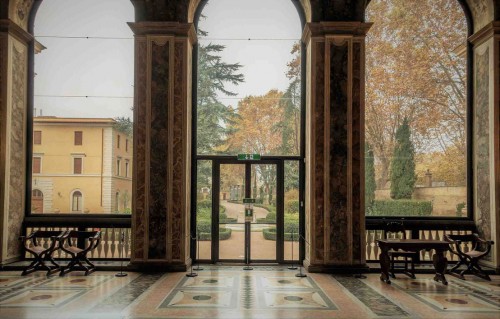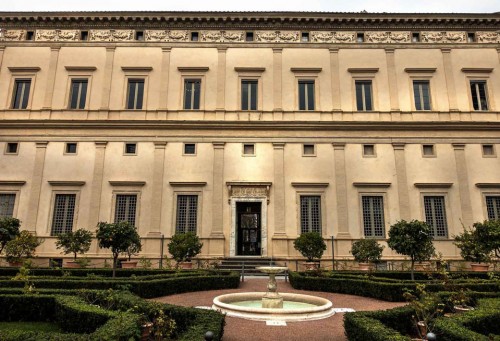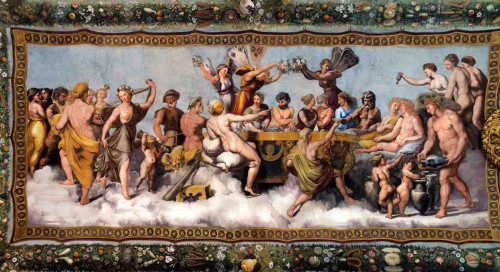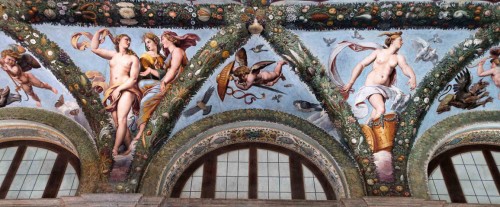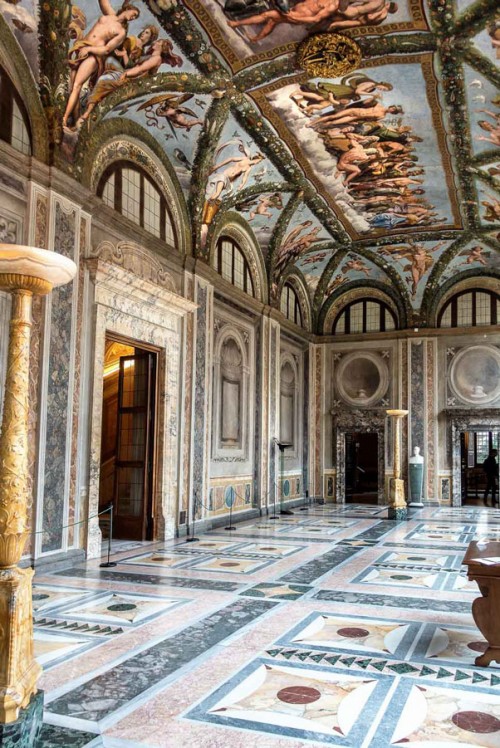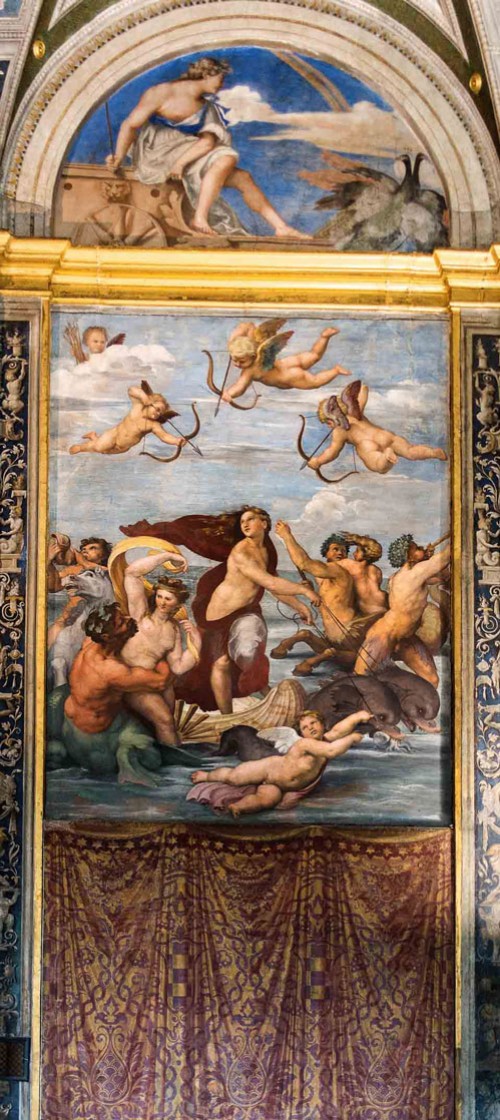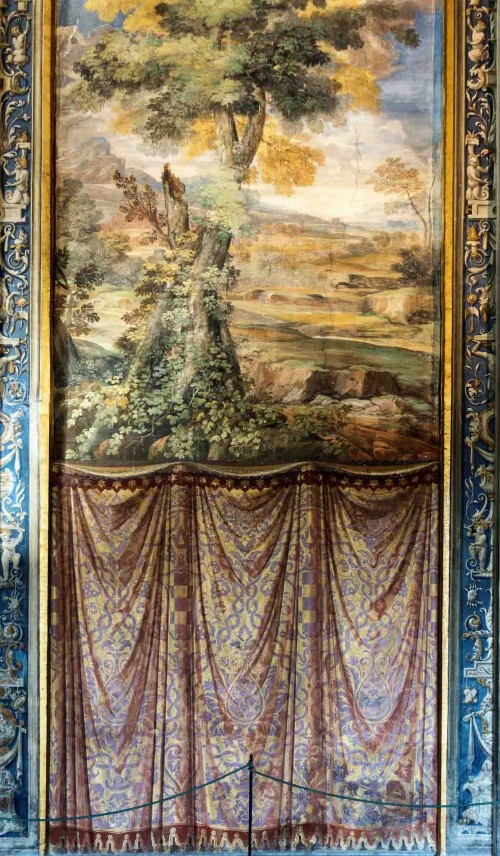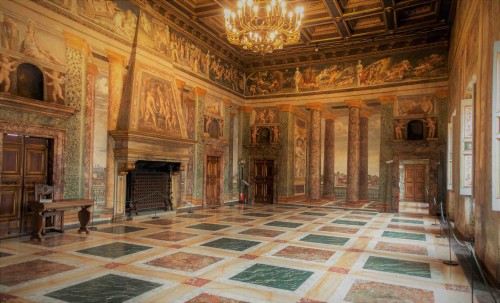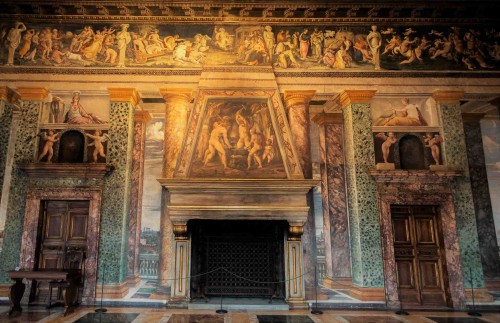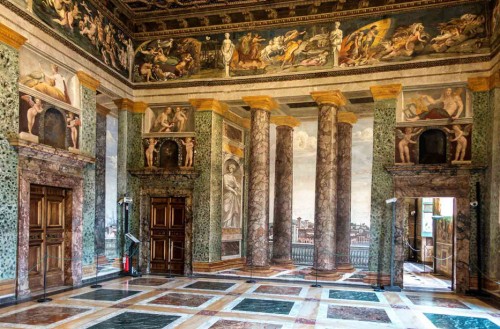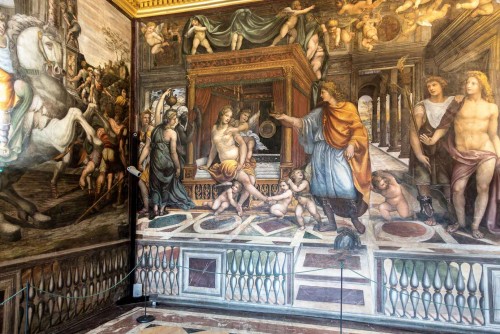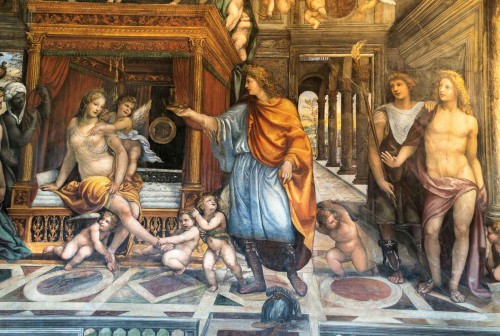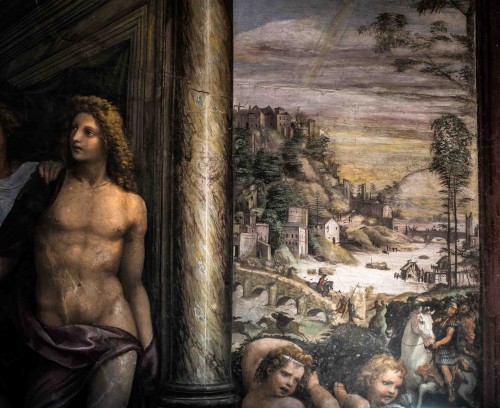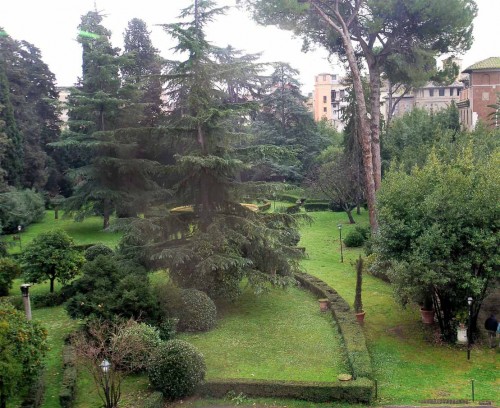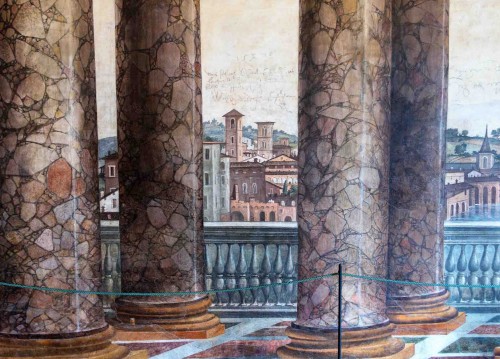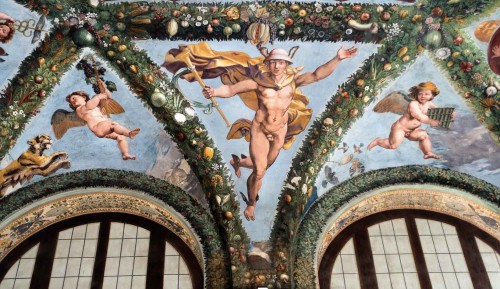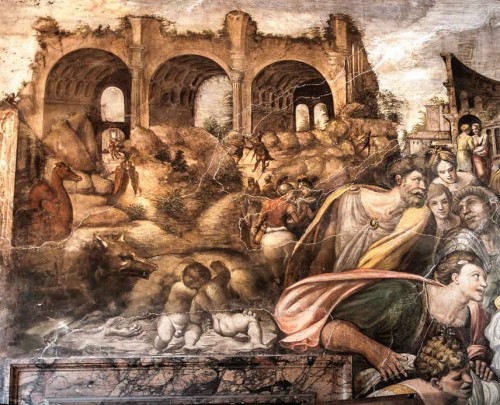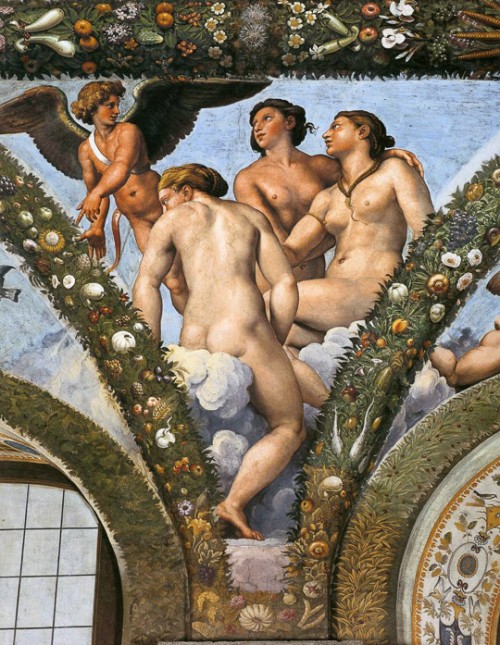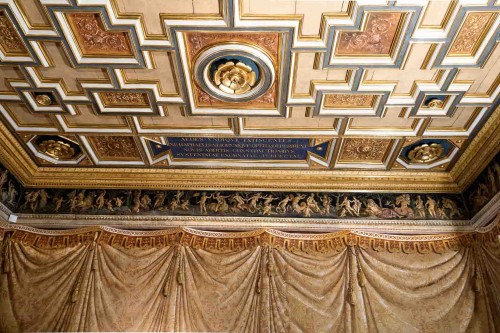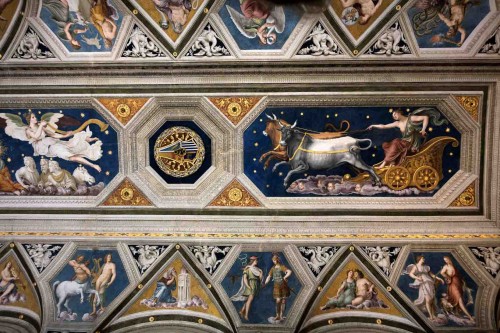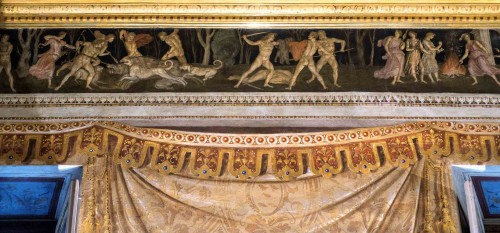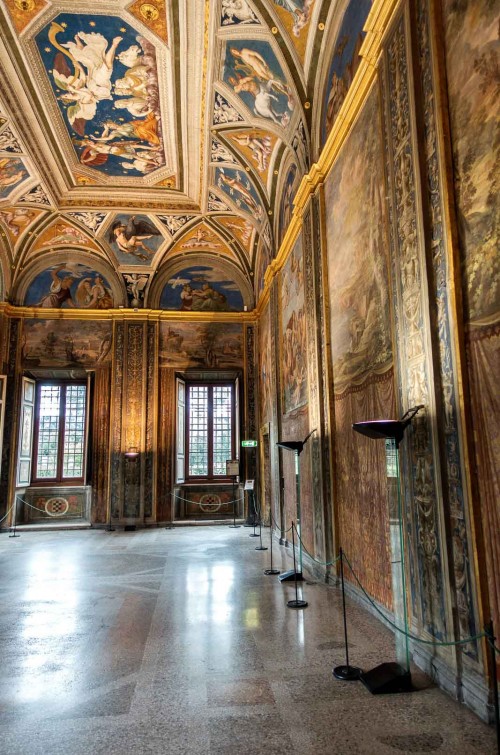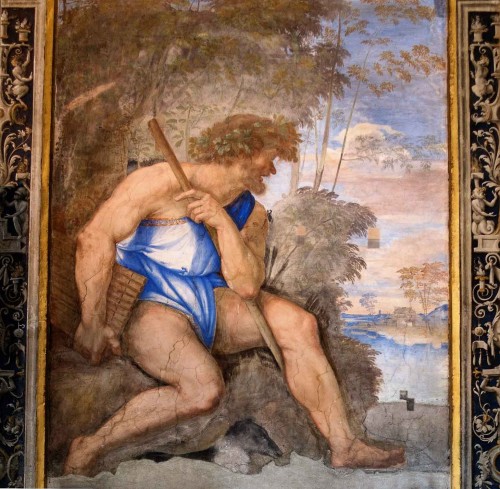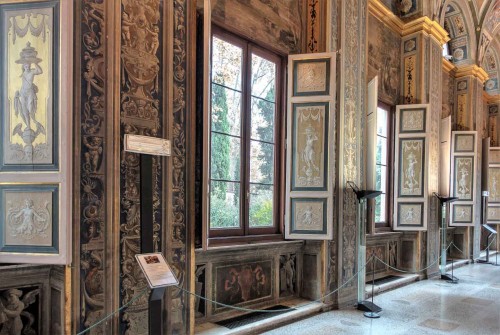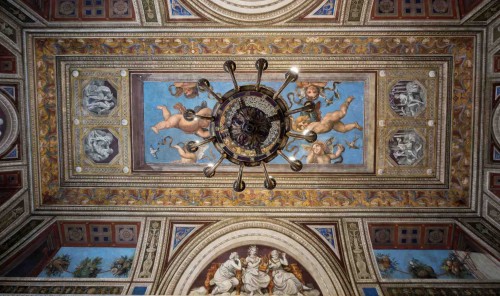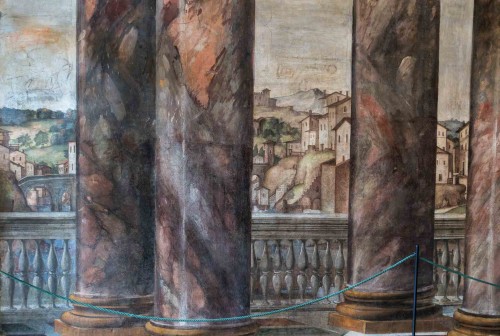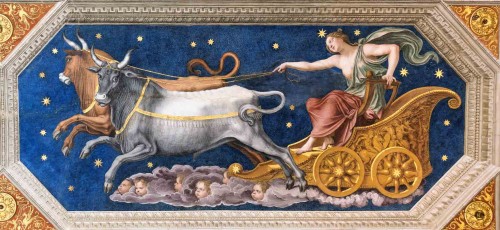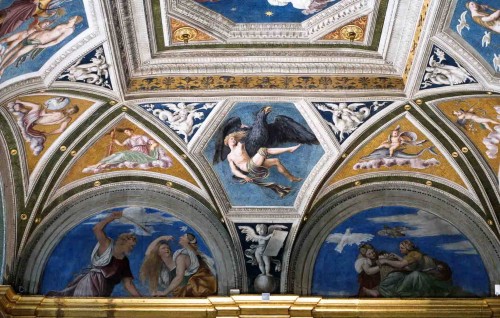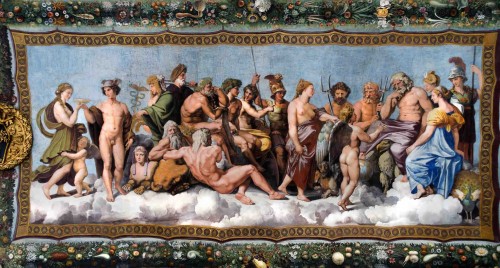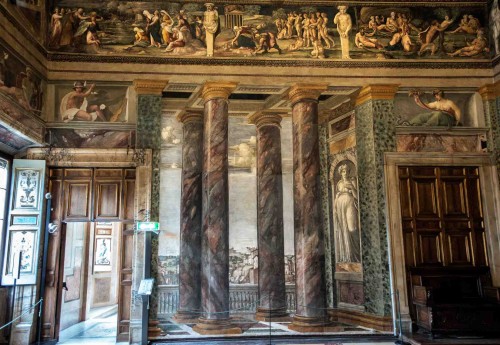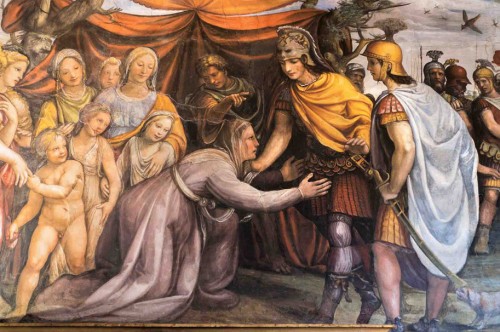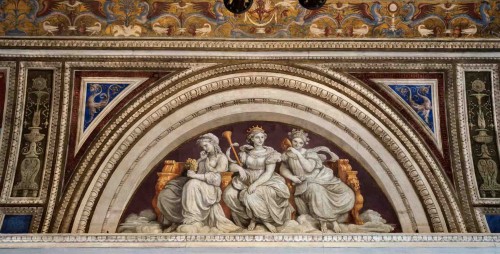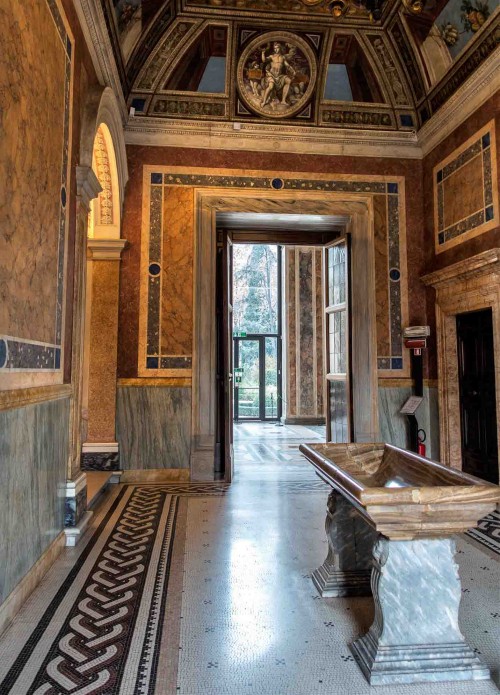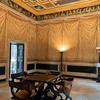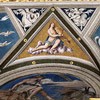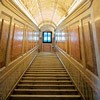This urban villa located on the Trastevere is an important example of art of the Renaissance in the Eternal City. Immersion in its interior is a journey enabling us to not only admire wonderful decorations, but also leading us into the atmosphere prevalent in the circles of the wealthiest inhabitants of Rome of the beginning of the XVI century, who spent their hours of leisure on partaking in earthly pleasures. In 1506 the residence on the Tiber was bought by a Siena-born financial potentate Agostino Chigi, who besides the ability to increase his own personal fortune, also expressed the need to create a fully Renaissance manor, where meetings were held to discuss painting, antiquity and literature, but also love and astrology. The guests also did not shy away from exquisite feasts in the company of popes, crowned princes, cardinals, and mistresses. Agostino Chigi, was in that regard, a product of his times, in which modesty was considered a weakness, while vanity and emanating wealth proved one’s intelligence and cleverness.

The structure was designated as a place of leisure and served a representative function. This was also the purpose of the outstandingly arranged garden (today preserved in a limited form), stretching all the way to the banks of the Tiber, with the loggias, fountains, stables and household buildings, located within. The villa itself consists of forty rooms situated on two stories and a mezzanine (meazzanino). The main idea of the architectural design, created by Baldassare Peruzzi, was integrating art and nature. The residence was to bring back memories of the Roman residences, which during antiquity were located within the premises of the city – an oasis of contemplation, nature and art and was to at the same time ensure esthetic pleasure, but in addition an inspiration for conversations and disputes. Giorgio Vasari, in sharing his impressions during its construction, wrote, that it (the villa) was created not out of bricks and concrete, but “was born with the passing of time”. And while the southern façade of the building (from the side of the street) is simple, almost raw, the one on the northern side, in which in the past the main enterance was located, is typical of suburban villas. The plant life, which greeted the guests – flowerbeds, rare kinds of bushes and trees (cypresses, laurel trees, Lebanese cedars, bergamots), accompanied them on their way to the Loggia di Psiche (in the past opened), located on the ground floor. Among the garlands and festoons painted on the ceiling, creating a type of pergola and seemingly freshly draped to welcome the incoming guests, we will notice exotic fruit, which had just been brought from America. Among them visitors could admire the extensive mythological scenes which tell the story of Amor and Psyche, from the love story written by a Roman writer Apuleius, entitled Metamorphoses (The Golden Ass). In one of the scenes we will notice the welcoming of the earthly Psyche to Olympus, in another – the wedding feast of Amor and Psyche in the company of Olympian gods. Historians claim, that these frescoes – created by Raphael and his students (mainly Giulio Romano) were a direct reference to wedding of Agostino himself, which he prepared – as it ultimately turned out – with a low-born Venetian beauty and the mother of his four children, Francesca Ordeaschi. As we can see, the future wife of Agostino, similarly to Psyche underwent numerous trials, and apparently, during a long premarital relationship, proved herself worthy of marrying “the divine” chosen one. In the lunettes we will see the Olympian gods, nymphs and finally the main protagonists – Amor and Psyche. Next to the loggia is the Sala del Fregio (Room with a Frieze), which was a sort of a waiting room for the guests. It is adorned with placed near the top, surrounding the chamber as a ribbon, mythological scenes by Peruzzi, of which the ones that catch the eye are those depicting the twelve labors of Hercules, which in an obvious way reference the character traits and virtues of the master of the house.

The topic of the paintings on the ceiling of the following loggia (Sala di Galatea) is a reference to the mythological world of symbols, but above all to the constellation of the Pegasus and the Big Dipper, which was a direct reference to Chigi’s date of birth. This, reportedly advantageous alignment of stars, which was to guarantee him prosperity, was also the best calling card of the host, and proof that the planets themselves have him under their care. The allegory of Fame (Fama), announces the date of his birth – 1 December, 1466, in which individual celestial bodies – also shown in an allegorical way – were situated in the following order : Jupiter in the sign of the Aries, the Moon in the sign of the Virgo, Mars in the sign of the Libra, the Sun in the sign of the Sagittarius, Mercury in the sign of the Scorpio, Venus in the sing of the Capricorn, while Saturn in the sign of the Pisces. However, it is not those paintings created by Peruzzi and Sebastiano del Piombo, that draw the attention of art enthusiasts who come here, but rather the representation of Galatea, a mythological nymph, with whom the uncouth cyclops Polyphemus fell in love (Raphaels’ Triumph of Galatea). Galatea is fleeing from him in a boat pulled by two dolphins and she is accompanied by nereids and marine deities. The fresco was painted by Raphael himself (1511), once again proving his painting talent in the clear construction, harmonious composition underlined by a delicate color scheme and in the beauty of the depicted figures, creating in this way on of the most exceptional works of the Renaissance. It is assumed, that his model was the then Roman beauty and a famous courtesan – Imperia Cognati, whom Agostino (and not only he) willingly visited and supported. The idealized landscapes with streams, hills and trees, were not created until the XVII century, and their author was Gaspard Dughet.

In rooms of the first floor we will see more frescoes. In the Sala delle Prospettive (Room of Perspectives), as if in a direct reference to the painting of ancient Romans, the incoming visitors are greeted by illusionist architecture opening up in the form of loggia onto an ideal scenery. Among the painted columns and porticos we will see Roman vedute and fragments of landscapes. The author of these frescoes was once again Baldassare Peruzzi. He also completed the frieze surrounding the room, whose topic was taken from Ovid’s Metamorphoses. Above the fireplace we will notice Vulcan with his helpers – the work of Giulio Romano. In this very room, on the Feast of St. Augustine (the host’s patron) the grand wedding of Agostino and Francesca Ordeaschi took place, in the presence of Pope Leo X and twenty cardinals. Immediately next to it, is the master’s bedroom (Sala della Nozze), whose walls are embellished with scenes from the life of Alexander the Great, painted by Giovanni Antonio Bazzi (known as Il Sodoma). The main scene is the coronation of Roxanne, which is an overture to the wedding night of the Macedonian general with the Persian princess. The wedding scene is accompanied by gleeful putti and ladies-in-waiting who look on the bride with interest, while the colonnade opens up onto a picturesque landscape with a meander of a river, a bridge, small buildings, and figures moving about. This representation is of course a reference to the wedding of Agostino himself. On the left we will notice, the generous Macedonian general granting an audience to Sisygambis – the mother of the Persian ruler Darius III and her family, among which our attention is drawn to a young, nude girl – most likely Stateira, the daughter of Darius, whom Alexander married (as a second wife) in order to unify both dynasties.
Going outside, we pass through another room – a kind of a span connecting the northern part of the villa with the southern one. This could not be left without wall decorations either.

Just how valuable his creation was to Agostino Chigi, in which he smuggled many of his desires, is shown in his will (preserved until the present), read by him on the day of his wedding. He left the villa to his sons, under the condition that it would never be rented out nor sold, and that the Chigi name would be connected with it forever. When the great banker suddenly died a year after his wedding (and nearly 10 years prior than the stars predicted), the villa came into the possession of the family. Seven years later, during Sacco di Roma, its owners abandoned it leaving it to the mercenaries of Emperor Charles V. They, left their barbarian mark in the Sala delle Prospettive – inscriptions chiseled on the walls: Why should I who write not laugh – the Lansquenets have set the Pope on the run” and “Babylon” – in the place where we see a view of the city. In time the villa fell into ruin, Chigi’s descendants could not keep a truly enormous fortune left to them and finally in 1579 the property was sold to Cardinal Alessandro Farnese – the grandson of Pope Paul III. The pope even planned to connect it with the properties of the Farnese family on the other side of the river, via a bridge, of which the initial construction can still be seen today above the via Giulia. Despite the fact, that almost nothing was changed in the villa, while the new owners did not take special care of it, it is thanks to them that it acquired its name. It seems that the stars wanted it so. In the XVIII century the residence came into the hands of the Naples-based Bourbon branch. In the following century it was rented out, and the enterance was moved. A significant part of the property, along with the famous loggia, the location of the legendary banquets, fell victim to modernization of the city (fire safety construction, plotting out a new arterial road along the Tiber).
In 1924 Farnesina became the property of the Italian state. Today it is the residence of Accademia dei Lincei, a scientific institution established in 1603, which was made famous for, among other things, propagating the works of Galileo.

